Deep-Sky Observing from The Big Island of Hawaii
In February of this year, my wife and I fled El Nino to the Sun and stars of
Hawaii. I dragged my 13.1 inch "travel scope" along, a scope I designed and
built in 1991. Following are my notes from a heretofore photon starved amateur.
All observations early morning (starting an hour and a half
before morning twilight) on 2/25/98, using a 13.1" reflector at the Big Island
Hawaiian latitude of 20 degrees; limiting visual magnitude 5.9; "seeing" 7, on a
1-10 scale (1 being the poorest).
I finally had a successful early morning
observing session, though I had to drive 35 miles north to the Kohala district to do so.
I observed for an hour and a half (4:15-5:45AM; 2/25/98). The very first and last object I
looked at was Omega Centauri (Ngc 5139) which puts all other globular
clusters in the bush league, I'm afraid. 5139 has a diameter of 36.3' and a magnitude of
3.7; compare this to M13 (which is in the sky at the same time): a mere
16.6' ; magnitude 5.9. Of course, 5139 was an easy naked eye object, M13 needed averted
vision, indicating that my naked-eye magnitude limit hovered around 5.9. At 123X M13's
diameter filled 1/4 of the field of my 12.4 Plossl eyepiece... 5139 completely filled this
field. Furthermore, all the stars were uniform in magnitude, the glob was very
symmetrical, with a very even, gradual brightening toward the center. Stars were resolved
to the core with my 13-inch, BTW. Just magnificent! |
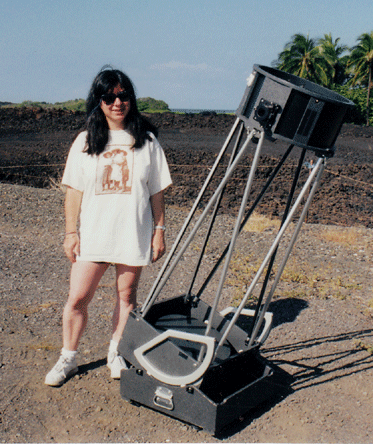
This scope "breaks down" into a box so it can be checked in as
regular luggage.
I carry-on the primary and the 4' tubes.
No extra charges are incurred.
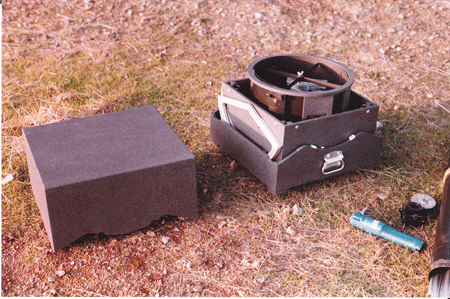
|
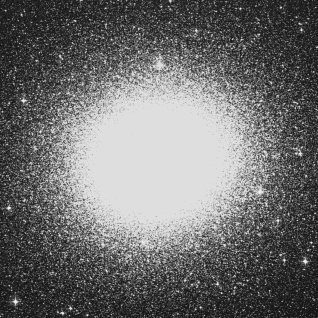 |
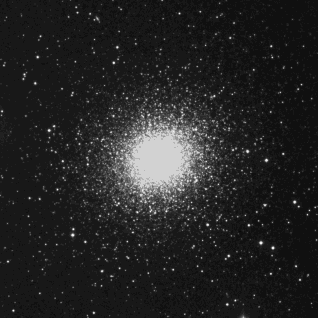
|
A comparison: Omega Centauri (left)
and M13 using RealSky at the same scale.
Ngc 5128 (RA 13 25.3; -43 01)
Mag 7.0. (Centaurus) Also known as "Centaurus A"; an intense emitter of radio
energy.
Burnham conservatively estimates this galaxy as containing the equivalent of 20 billion
suns, placing it in the ranks of another giant elliptical galaxy, M87, as one of, if not; the
most massive galaxy known. Like M87, it would be a featureless elliptical in just about
any telescope, save one unique feature: a huge dust lane bisecting the 18' glow. As dust
lanes are antithetical to elliptical galaxies, this is a very peculiar object, indeed. The
northern half appeared somewhat more flattened in my scope at 123x, and the dust lane gave
up more detail (mottling) at 213x. |
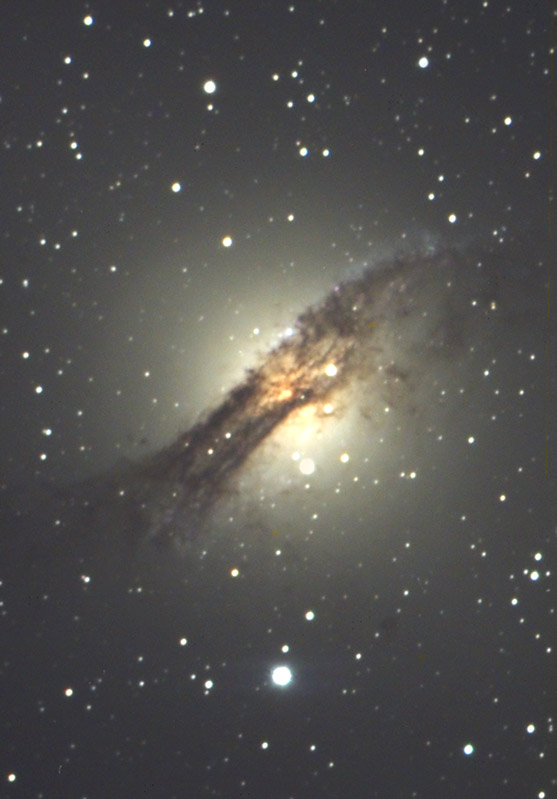
|
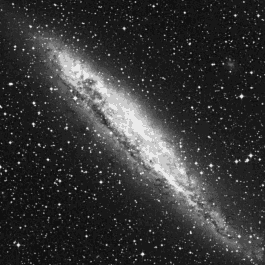 |
Ngc 4945 (RA 13 05.3; -49 29)
Mag 9.0 (Centaurus)
A very, VERY nice, large, inclined--almost edge-on--galaxy. Reminded me very much of Ngc
253 in Sculptor, though a smaller version. Still, this galaxy subtends over 20' of arc
(almost three times the length of M82, or Ngc 4565, for example). Easily fills the field
at 123x. The "glow" is pretty even the entire length of the galaxy, with only a
slight brightening toward the middle. Only about four degrees east-southeast of Omega
Centauri.
|
Ngc 5102 (RA 13 21.9; -36 39)
Mag 9.6 (Centaurus)
Decent sized spiral ( 9.3'x3.5'), slight brightening in middle; otherwise, not too
exciting.
Ngc 5161 (RA 13 29.2; -33 10) Mag 12 (Centaurus)
A smaller, dimmer version of 5102.
Ngc 5253 (RA 13 39.9; -31 39) Mag 10.6 (Centaurus)
A relatively bright, though small, featureless galaxy.
M83 (RA 13 37; -29 52) Mag 8.0
(Hydra)
Though I've seen this before from San Francisco latitudes, this was a good 20 degrees
higher, almost directly north of Omega Centauri... Obviously a face-on spiral, this looked
curiously out of balance... A barred spiral? Obscuring dust lanes? Examining photos much
later, it seems my first guess was right. I'm very glad I gave this one a look-see at this
latitude.
|
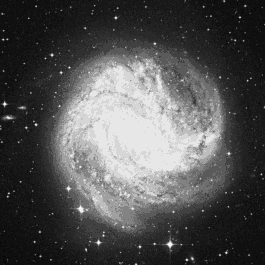
|
Ngc 3242 (RA 10 24.8; -18 38)
Mag 8.9 (Hydra)
Also in Hydra, and also visible from my normal San Francisco sites, I took a quick peek at
this planetary, dubbed "Jupiter's Ghost." It was a bit too west for ideal
viewing, but it still looked like the ghost of the planetary king--same color, size...
just dimmer, no moons, no definition. Nice object.
Ngc 3132 (RA 10 07.7; -40 26) Mag 8.2 (Vela)
A bright planetary, not unlike M57 (The Ring), though this one has a very bright (mag
10.1) central star. Nice object. Also called the "Eight-Burst Nebula."
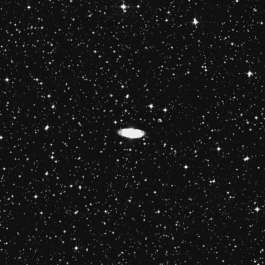 |
IC 4406 (RA 14 22.4; -44 09)
Mag 10.6 (Lupus)
A bright, curiously "box-shaped" planetary, especially at higher power. Even
dispersal of light.
|
Shapley 1 (RA 15 51.7; -51 31)
mag 13.6 (Norma)
This one skunked me! The most southernmost object I looked for, and the dimmest. According
to all accounts, a tough object. Photos show a very dim ring planetary of 76" size.
Tried using an Ultrablock filter, still to no avail.Can
you see it in the RealSky image at right? |
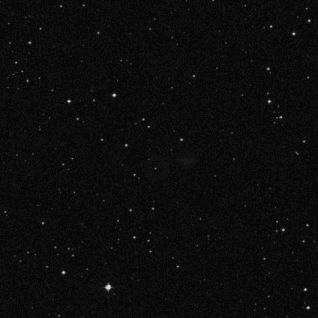 |
Besides hunting down the above objects (most of which I've never seen before), I also
looked at some of my favorite, well-known Northern Hemisphere objects that were well
placed (20 degrees higher!). These included M17, M20, M8 in Sagittarius, Ngc 4038-9 in
Corvus, and M13 in Hercules--the latter I was always sweeping back to compare with Omega
Centauri!
In conclusion, I did not have to haul a telescope to Hawaii to enjoy a hard-earned
vacation... Hawaii has so much to offer... Just gazing at the horizon of the seemingly
limitless expanse of the Pacific Ocean is enough to elicit the wave of awe, mystery,
appreciation and thankfulness that I've already already tasted with my love of
astronomy... But... I did want to include the two...
back to:
HOME








